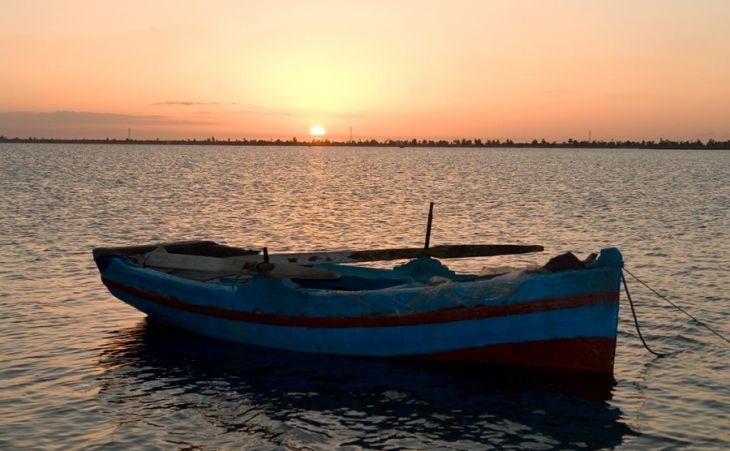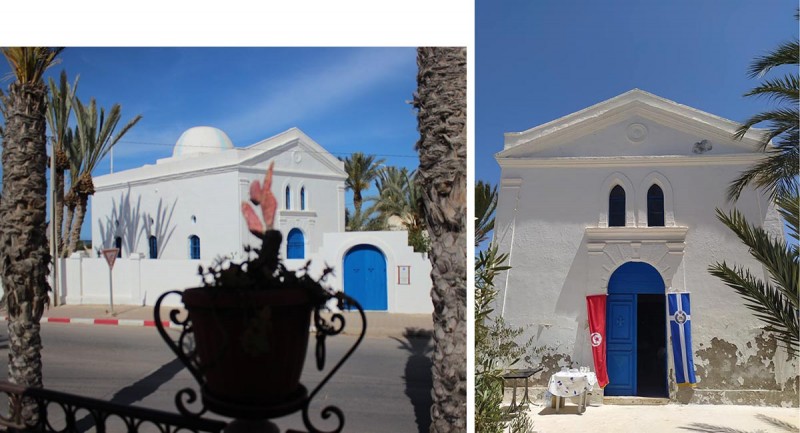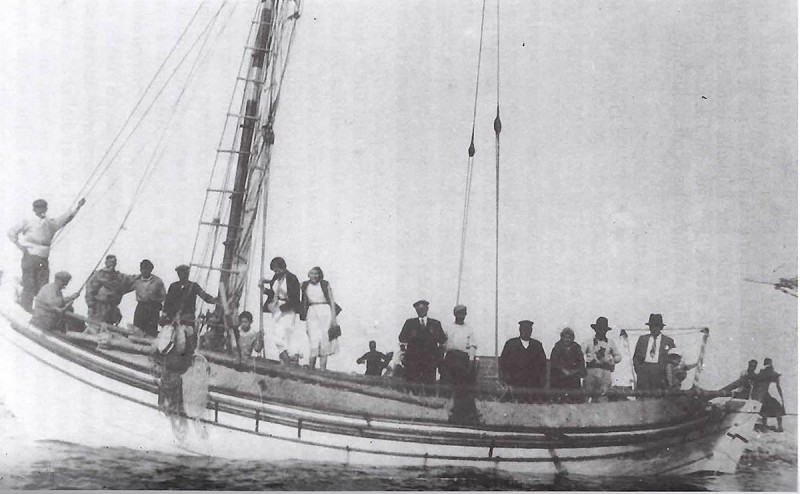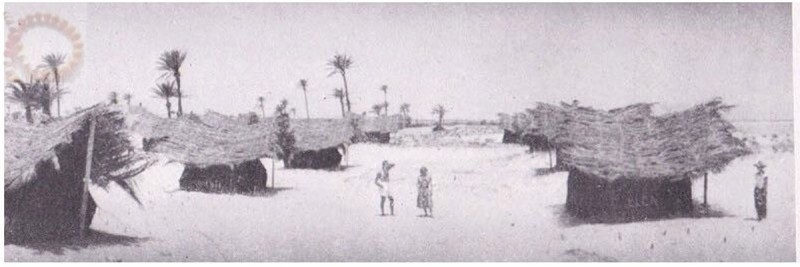It is a little known story: that of the Greeks who came to settle in Djerba to fish for sponges. The unexpected consequence was the creation of one of the very first Club Med villages in Djerba.
Last spring, an Orthodox mass was celebrated in the small, newly renovated
Saint-Nicolas church in Djerba. It was the first time in 60 years.
This church was the gathering point of a once large community of sponge fishermen of Greek origin.
At the end of the 19th century, Greek fishermen were very interested in the sponges of Djerba which were among the most beautiful in the Mediterranean.
Every year, they left for long fishing trips that took them to the North African coast.
These fishermen often went along Tunisia, from the south to Cape Bon. Some of them ended up settling there.
At the time, Djerba was home to excellent Tunisian sponge fishermen. They used to dive to depths of 20 meters without any equipment.
The Greeks introduced more sophisticated means: the aquascope (a cylinder with a glass bottom for spotting sponges from boats) and later the scuba set.
The church of Saint Nicolas in Djerba
A childhood among the sponge fishermen
One of their descendants, Laris Kindynis, recounted how his grandfather, a shipowner, had left his Greek island of Kalymnos to create a sponge fishing and export business in Djerba.
Little Laris loved to stroll through the warehouse where the sea-water-soaked sponges were piled up to be washed, sorted, cut and shipped to Europe.
He told of his fascination when he saw the small port of Houmt-Souk filled with hundreds of sailing boats of Greek fishermen, gathered for the Orthodox Easter.
Later, the Second World War broke out and made it dangerous to sail. Laris Kindynis’ father, who had inherited the business, was forced to change jobs.
The warehouse was connected to the family home to form a small hotel – the Hôtel du Lotos, one of the first in Djerba.
The young teenager had no taste for the hotel business. He preferred to relive the sensations of his childhood by exploring the shores of his native island in a sailboat and by practising underwater fishing in its wildest corners.
Sponge fishing boat of the Kindynis family in 1933
(photo taken from "Djerba, the enchanted island of my childhood", MC-Editions, Tunis 2009)
Djerba at time of Club Med
By what chance did the young man then meet Gérard Blitz, the inventor of Club Med? Why did he describe to him his favourite place, a small deserted cove not far from the Taguermess lighthouse where he used to go fishing alone for mullet and grouper?
A common friend had brought them together at a Parisian party at the Moulin de la Galette. Gérard Blitz’s exceptional charisma, he would later say, had immediately pushed him to reveal all these still unknown wonders: the Seguia lagoon, the long white beaches lined with palm trees, the rocks full of groupers.
And so, in 1954, one of the very first Club Med villages was established in Tunisia, precisely in this dream location.
Club Med Djerba in 1954: American army tents under palm tree roofs
Great trips and nostalgia
Disappointed and fascinated at the same time, the local boy saw his secret paradise invaded by urban dwellers who came from Europe to experience a new style of vacation.
But very soon, he would start working for the Club himself as an animator and organizer of sea excursions.
Enthusiastic about travelling, Laris Kindynis then moved to Tahiti. He participated in the creation of numerous holiday villages and luxury hotels throughout the world.
After forty years in Polynesia, he chose to end his life in Djerba.
Djerba where the modest Hotel du Lotos still exists, facing the marina.
Just next door stands the small Greek church dedicated to Saint Nicolas, protector of sailors: a church built in the past on a piece of land donated by the grandfather Kindynis for the community of Greek fishermen of Djerba.
Books:
Djerba, l’île enchantée de mon enfance, by Laris Kindynis, MC-Editions Tunis, 2009 (in French)
La Tunisie sous-marine, by Selim Baccar and François Brun, Lalla Hadria Editions, 2013 (in French)



